Stack Exchange network consists of 178 Q&A communities including Stack Overflow, the largest, most trusted online community for developers to learn, share their knowledge, and build their careers Visit Stack Exchange Misc 5 Find the domain and the range of the real function f defined by f (x) = x – 1 Here we are given a real function Hence, both domain and range should be real numbers Here, x can be any real number Here, f (x) will always be positive or zero Here value of domain (x) can be any real number Hence, Domain = R (All real numbers) We note that that range f (x) is 0 or positive numbers, So range cannot be negative Hence, RangeFind the Domain and Range f(x)=1/x Set the denominator in equal to to find where the expression is undefined The domain is all values of that make the expression defined

Pdf Function Part Farjana Siddiqua Academia Edu
F(x)=1/1-x^2 find domain and range
F(x)=1/1-x^2 find domain and range-Write the Domain and Range of the Function F ( X ) = X − 2 2 − X CBSE CBSE (Science) Class 11 Textbook Solutions Important Solutions 9 Question Bank Solutions 9938 Concept Notes & Videos 580 Syllabus Advertisement Remove all ads Write the Domain and Range of the Function F ( X ) = X − 2 2 − XYes For example, the function f (x) = − 1 x f (x) = − 1 x has the set of all positive real numbers as its domain but the set of all negative real numbers as its range As a more extreme example, a function's inputs and outputs can be completely different categories (for example, names of weekdays as inputs and numbers as outputs, as on




Find The Domain And Range Of The Function F X 1 Sqrt X 5 Youtube
Find the domain and range of the following functions f(x) = 1 x 2 Solution For any values values of x, the function will give defined values It will never become undefined So, domain is all real values that is R The range of x 2 lies between 0 to ∞ But we need find the range of 1 x 2 0 ≤ x 2 ≤ ∞ Multiplying by negative through out the inequality, we get ∞ ≤ x 2 ≤ 0 Add 1The domain and range of the function f= ((1/1x2)) x ∈ R, x ≠ ± 1 are respectively Q The domain and range of the function $f=\left\{\left(\frac{1}{1x^{2}}\right) x \in R, x \ne \pm 1There are no restrictions on domain The domain is (,) Since the value of x is squared, f(x) will always be equal or greater than 0
Example 1 Find the domain and range of the following functions f(x) = 1/(2 sin 3x) Solution In order to find the domain, let us equate the denominator to 0 2 sin 3x = 0 sin 3x = 2 This is impossible, because the minimum value of sin is 1 and maximum value is 1–1 x 2 4 y 021 Mathematics Learning Centre, University of Sydney 5 State its domain and range Solution The function is defined for all real xThe vertex of the function is at (1,1) and therfore the range of the function is all real y ≥ 1 12 Specifying or restricting the domain of a functionY = f (x) = (1 − x 2) 1 For range, y = (1 − x 2) 1 ⇒ y − y x 2 = 1 ⇒ y x 2 = y − 1 ⇒ x 2 = y y − 1 ⇒ x = ± y y − 1 ∴ y = 0 The term under the root has to be positive casei caseii
Find the domain and range of the function f(x) = (x^2 9)/(x 3) asked in Sets, Relations and Functions by RamanKumar (499k points) sets;So, the domain of the function f(x) is (∞,∞) Now to find the range, say f(x)= y, which gives x²9=y² or, x= ±√(y²9) Since x is a real number, y²9 must be positive or, y²>9 which gives y ∈ (3,∞),since y>0, which is the required range of f(x)To ask Unlimited Maths doubts download Doubtnut from https//googl/9WZjCW Find domain and range of `f(x)=x/(1x^2)`




Domain And Range Of A Function Tutorial Youtube



What Is The Domain And Range Of X 2 1 X 2 Quora
Range of arccot(x) View more examples »Algebra Q&A Library 1 find the domain and range of f(x) = 2 cos3x 1 find the domain and range of f(x) = 2 cos3x close Start your trial now!For the reciprocal squared function latexf\left(x\right)=\frac{1}{{x}^{2}}/latex, we cannot divide by latex0/latex, so we must exclude latex0/latex from the domain There is also no latexx/latex that can give an output of 0, so 0 is excluded from the range as well Note that the output of this function is always positive due to the square in the denominator, so the range




Pdf Function Part Farjana Siddiqua Academia Edu




Find The Domain And Range Of 1 Sqrt X X Youtube
This is the Solution of Question From RD SHARMA book of CLASS 11 CHAPTER RELATIONS AND FUNCTIONS This Question is also available in R S AGGARWAL book of CLASSOLUTION find the range and domain f (x)=1/x2 Question find the range and domain You can put this solution on YOUR website!What are the domain and range of the realvalued function f(x) = −3x 2 6x 1?




F X Ln X 4 Domain Range Graph And Its Inverse Youtube




What Is The Domain Of The Function Y 1 X X Quora
Example 1 Find the domain and range of the function y = 3 x 2 Graph the function on a coordinate plane The graph is nothing but the graph y = 3 x translated 2 units to the left The function is defined for all real numbers So, the domain of the function is set of real numbersThis is a revised answer!First week only $499!




Misc 5 Find Domain And Range Of F X X 1 Class 11
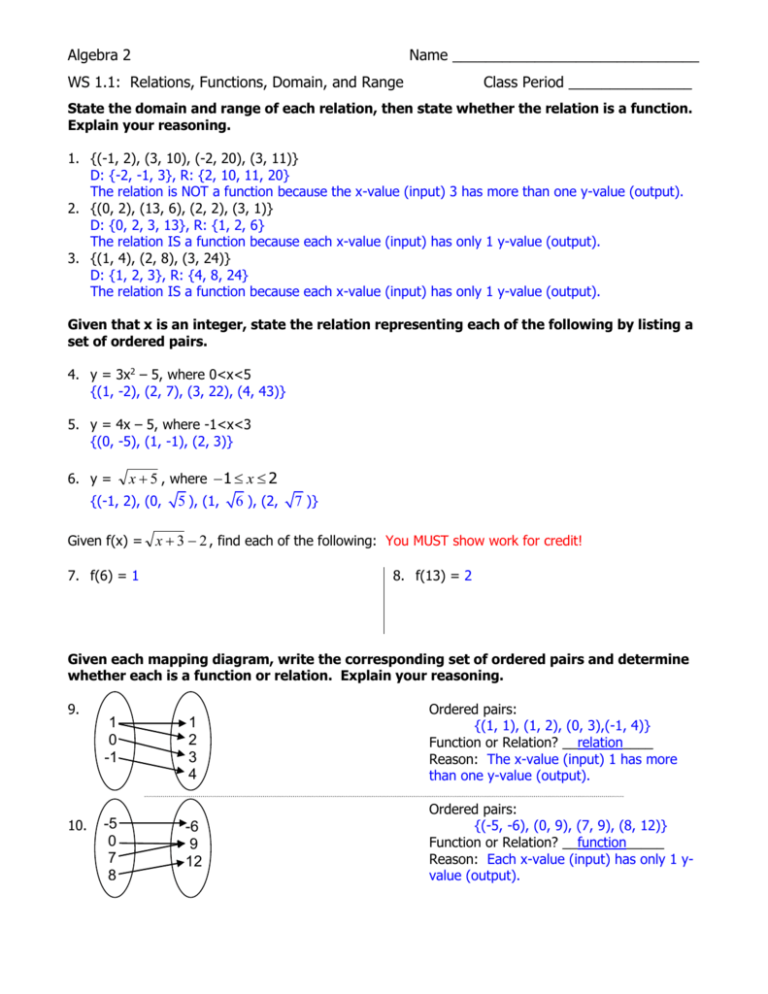



Ws 1 1 Answer Key
The range is the set of all valid values Find the domain and range of f (x)=x2/1x2 Domain of the function is where the function is defined The given function X R Let fx y y x1x2 x y1 x2 yx2 x y 0 This is quadratic equation with real roots Find the domain and range ƒx 1 x2 Maintain the following steps 1Solution for 1 find the domain and range of f(x) 2 cos3x Find the domain and range of the real function f(x) = x/1x^2 ━━━━━━━━━━━━━━━━━━━━━━━━━ ️Given real function is f(x) = x/1x^2 ️1 x^2 ≠ 0 ️x^2 ≠ 1 ️Domain x ∈ R ️Let f(x) = y ️y = x/1x^2 ️⇒ x = y(1 x^2) ️⇒ yx^2 – x y = 0 ️This is quadratic equation with real roots ️(1)^2 – 4(y)(y) ≥ 0
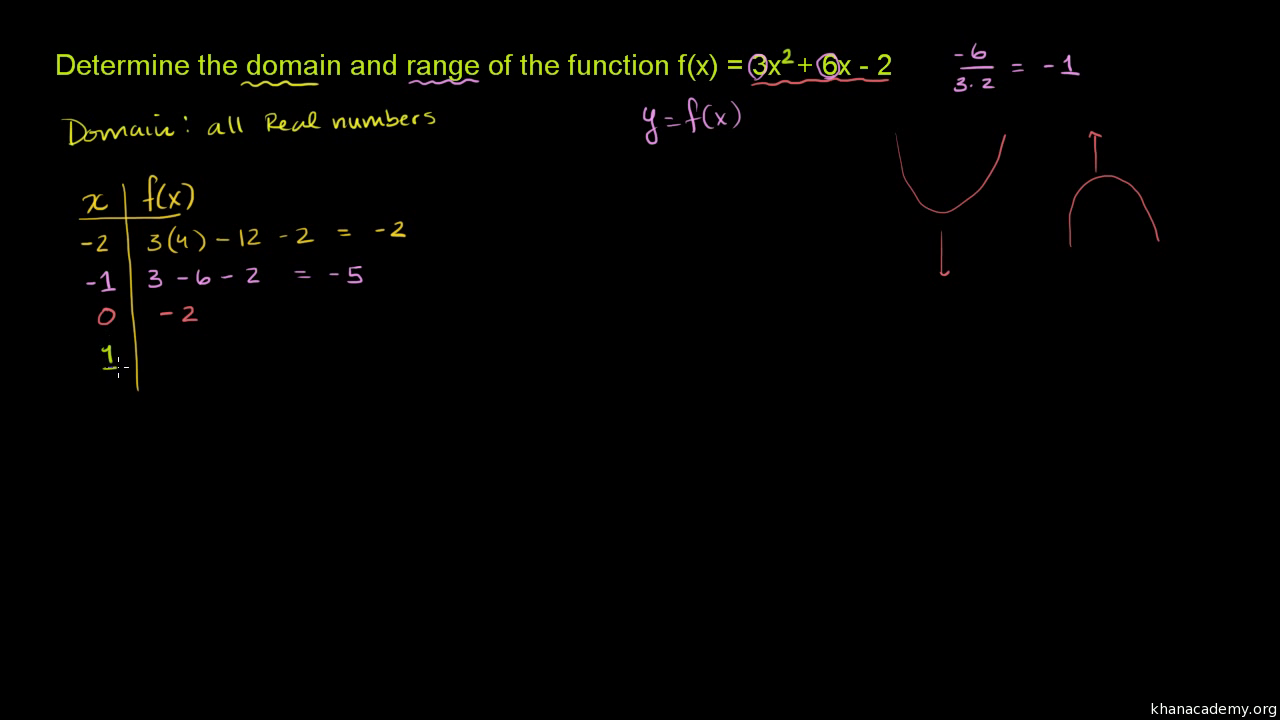



Domain And Range Of Quadratic Functions Video Khan Academy




How To Find The Range Of A Function Video Khan Academy
Find the domain of function f defined by Example 4 Find the range of function f defined by Solution to Example 4 The domain of this function is the set of all real numbers The range is the set of values that f(x) takes as x varies If x is a real number, x 2 is either positive or zero Agive an example of a function whose domain is {3,4,7,9}?This is a quadratic function There are no rational or radical expressions, so there is nothing that will restrict the domain Any real number can be used for x to get a meaningful output Because the coefficient of x 2 is negative, it will open downward With




Find The Domain And Range Of F X 1 Sin X Find Chegg Com




Find The Domain And Range Of The Function F X 1 1 X 2 X In R X 1 Dot
Find the domain and range of f(x)=1/(x^21)^1/2 Find the domain and range of f(x)=x^2 Answer by Fombitz() (Show Source) You can put this solution on YOUR website!Arithmetic Mean Geometric Mean Quadratic Mean Median Mode Order Minimum Maximum Probability MidRange Range Standard Deviation Variance Lower Quartile Upper Quartile Interquartile Range Midhinge Standard Normal Distribution f(x)=\frac{1}{x^2} domain\y=\frac{x}{x^26x8} domain\f(x)=\sqrt{x3} domain\f(x)=\cos(2x5) domain\f(xWhat is the domain and range of the real function f(x)=1/(1x^2)?
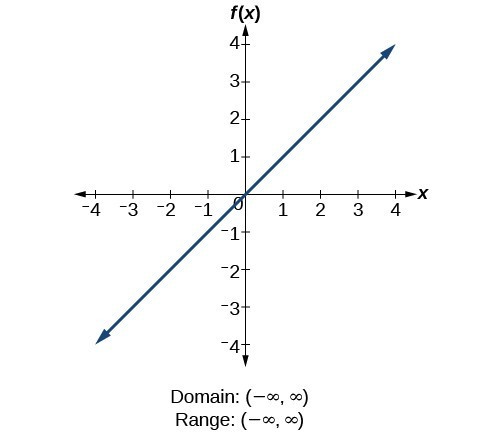



Determine Domain And Range From A Graph College Algebra




Finding Domain And Range
Answer to Consider the following function F(x,y) = \dfrac{1}{\sqrt{9 25x^2 25y^2}} Find the range of the function there will be several examples presented of domain and range Domain ( − ∞, ∞) Range ( − ∞, ∞) Square Root f(x) = 2√x, commonly just written as, f(x) = √x Domain 0, ∞) Range 0, ∞) When dealing with the set of real numbers we cannot take the square root of a negative number so the domain is limited to 0 or greater Absolute Value Function f(x) = x Given f (x) = 1/√x−5 To find the domain and range of function Explanation So, the domain of a function consists of all the first elements of all the ordered pairs, ie, x, so we have to find the values of x to get the required domain Given, f (x) = 1/√x−5 Now for real value of x5≠0 and x5>0 ⇒ x≠5 and x>5




Ex 2 3 2 Find Domain And Range I F X X Chapter 2



What Is The Domain And Range Of X 2 1 X 2 Quora
Find the Domain and Range f(x)=x^2 The domain of the expression is all real numbers except where the expression is undefined In this case, there is no real number that makes the expression undefined Interval Notation SetBuilder Notation Locate the vertex of the parabolaWhen the given function is of the form f(x) = 1/(x – 1), the domain will be the set of all real numbers except 1 In some cases, the interval be specified along with the function such as f(x) = 3x 4, 2 < x < 12 Here, x can take the values between 2 and 12 as input (ie domain)Enter your queries using plain English To avoid ambiguous queries, make sure to use parentheses where necessary Here are some examples illustrating how to ask for the domain and range domain of log(x) (x^21)/(x^21) domain;



What Is The Range Of 1 X 2 1 Quora




Answer The Following Exercises And Show All Possible Chegg Com
Find the domain and range of function f(x)=x^2/1x^2 2 See answers wwwkriti wwwkriti Stepbystep explanation I hope this answer help u prakash1951 prakash1951 Answer domain is R and range is 0,1) HOPE IT HELPS YOU New questions in Math Sabse baat karne ko humbhi taiyaar hai koi baat toh kare mere seFind domain and range from graphs Another way to identify the domain and range of functions is by using graphs Because the domain refers to the set of possible input values, the domain of a graph consists of all the input values shown on the x axis The range is the set of possible output values, which are shown on the y axisAnswer to Find the domain and range of the function f(x, y) = V 16 x2 y2 Domain •{(x, y) x2 y2 < 16 • {(x, y) x2




Find The Domain And Range Of The Function F X 1 1 X 2 X In R X 1 Dot
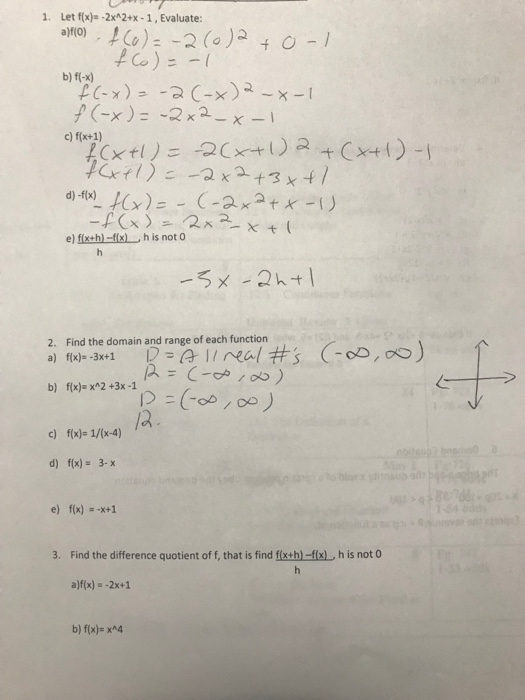



1 Let Fx 2xa2 X 1 Evaluate O C 2 0 0 1 Chegg Com
Arrow_forward Question View transcribed image text fullscreen Expand check_circleSet the denominator equal to zero Remember, dividing by 0 is undefined So if we find values of x that make the denominator zero, then we must exclude them from the domain Now to find the range, notice that Click here 👆 to get an answer to your question ️ The domain of the function is given Find the range f(x) = 2x 1 Domain {2, 0, 2, 4}



What Is The Range Of The Function F X X 1 Quora
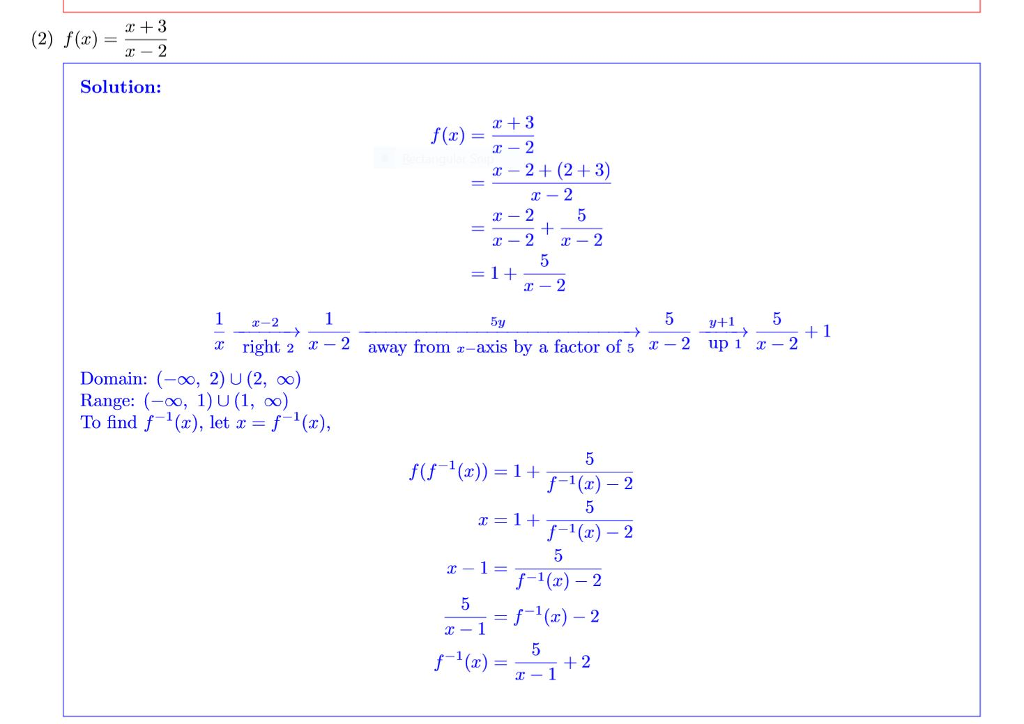



The Problem Was To Graph The Function Find The Chegg Com
Click here👆to get an answer to your question ️ Find the domain and range of the function f (x) = x ^2/1 x ^2 Join / Login > 11th > Applied Mathematics > Functions > Introduction of functionsWelcome to Sarthaks eConnect A unique platform where students can interact with teachers/experts/students to get solutions to their queriesAnd whose range is {1,0,3} BFind two different functions whose domain is {3,8}and whose range is {4,1} C Explain why there does not exist a function whose domain is
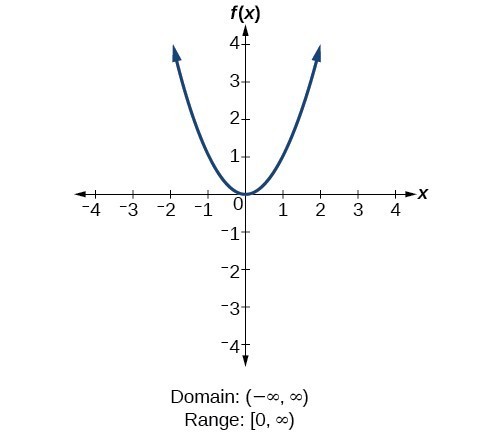



Determine Domain And Range From A Graph College Algebra



What Is The Domain Of The Function Y 1 X X Quora
Find the domain of the function \(f(x)=x^2−1\) Solution The input value, shown by the variable x in the equation, is squared and then the result is lowered by one Any real number may be squared and then be lowered by one, so there are no restrictions on the domain of this function The domain is the set of real numbersLet Then means that because the denominator cannot be 0 So the domain of f is To find the range, get x in terms of y So clearly, Then because it is a square, This means that Then either because that makes or because that makes a unit fraction that is smaller than 1 So,Find the domain of 1/(e^(1/x)1) function domain square root of cos(x) log(1x^2) domain;
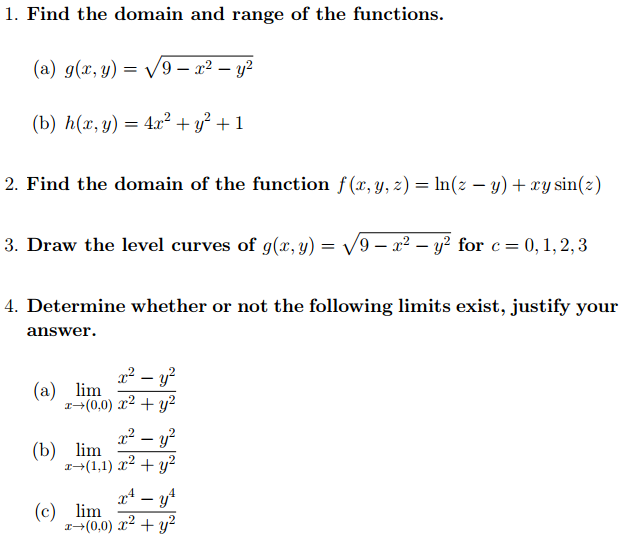



Find The Domain And Range Of The Functions G X Y Chegg Com




Find The Domain And Range Of The Following Real Functions I F X X Ii F X Sqrt 1 X 2
The procedure to use the domain and range calculator is as follows Step 1 Enter the function in the input field Step 2 Now click the button "Calculate Domain and Range" to get the output Step 3 Finally, the domain and range will be displayed in the new windowTranscribed image text 2 f(x) = 1 VA Functions In Exercises 16, find the domain and range of each function 1 f(x) = 1 x2 3 F(x) = V 5x 10 4 g(x) = x² – 3x 4 2 6 G(1) = 1² 16 5 f(t) = 31 f = { ("x , " 𝑥2/(1𝑥2)) x ∈ R } We find different values of 𝑥2/(1 𝑥2) for different values of x Domain Value will always be between 0 & 1 We note that Value of range y = 𝑥2/(1 𝑥2) is always positive Also, it is always between 0 and 1 Hence, Range is any positive integer between 0 and 1 with 0 included Thus, Range of f = 0, 1)




F X 1 X 2 1 Find Domain And Range Of The Following Function Brainly In
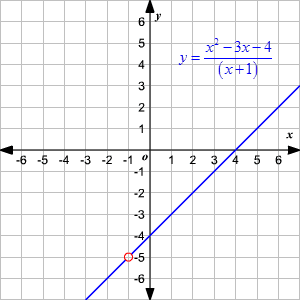



Domain And Range Of Rational Functions
Step 1 Draw the graph Step 2 Find the possible values of x where f (x) is defined Here the x values start from 2 and ends in 2 Step 3 The possible values of x is the domain of the function ∴ \therefore ∴ the domain of the circle is { x ϵ R − 2 ≤ x ≤ 2 x\epsilon \mathbb {R}2\leq x\leq 2 xϵR −2 ≤ x ≤ 2 } = In the case of itexf(x) = \frac{1}{x3}/itex, the parent function is itexf(x) = \frac{1}{x}/itex The domain and range of this parent function is (∞, 0) U (0, ∞) itexf(x) = \frac{1}{x3}/itex is a translation of the parent function 3 units to the right For the function f(x) = 3(x − 1)2 2, identify the vertex, domain, and range The vertex is (1, 2), the domain is all real numbers, and the range is y ≥ 2




Domain Range A Find The Natural Domain 3 1 F X Chegg Com




Find The Domain And Range Of The Function F X 1 Sqrt X 5 Youtube
The function f(x) = x 2 has a domain of all real numbers (x can be anything) and a range that is greater than or equal to zero Two ways in which the domain and range of a function can be written are interval notation and set notation




Find The Domain And Range Of The Function F X 2 X 5



Domain And Range Of A Function




Determine The Domain And Range Of An Inverse Function College Algebra
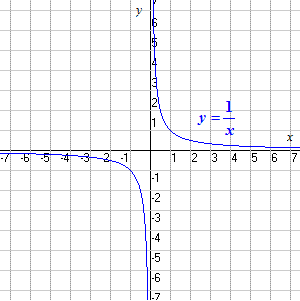



Domain And Range



What Are The Domain And Range For 1 Y X 3 And 2 Y 16 X 2 Quora



What Is The Domain And Range Of F X X 1 X 2 1 X 3 Quora
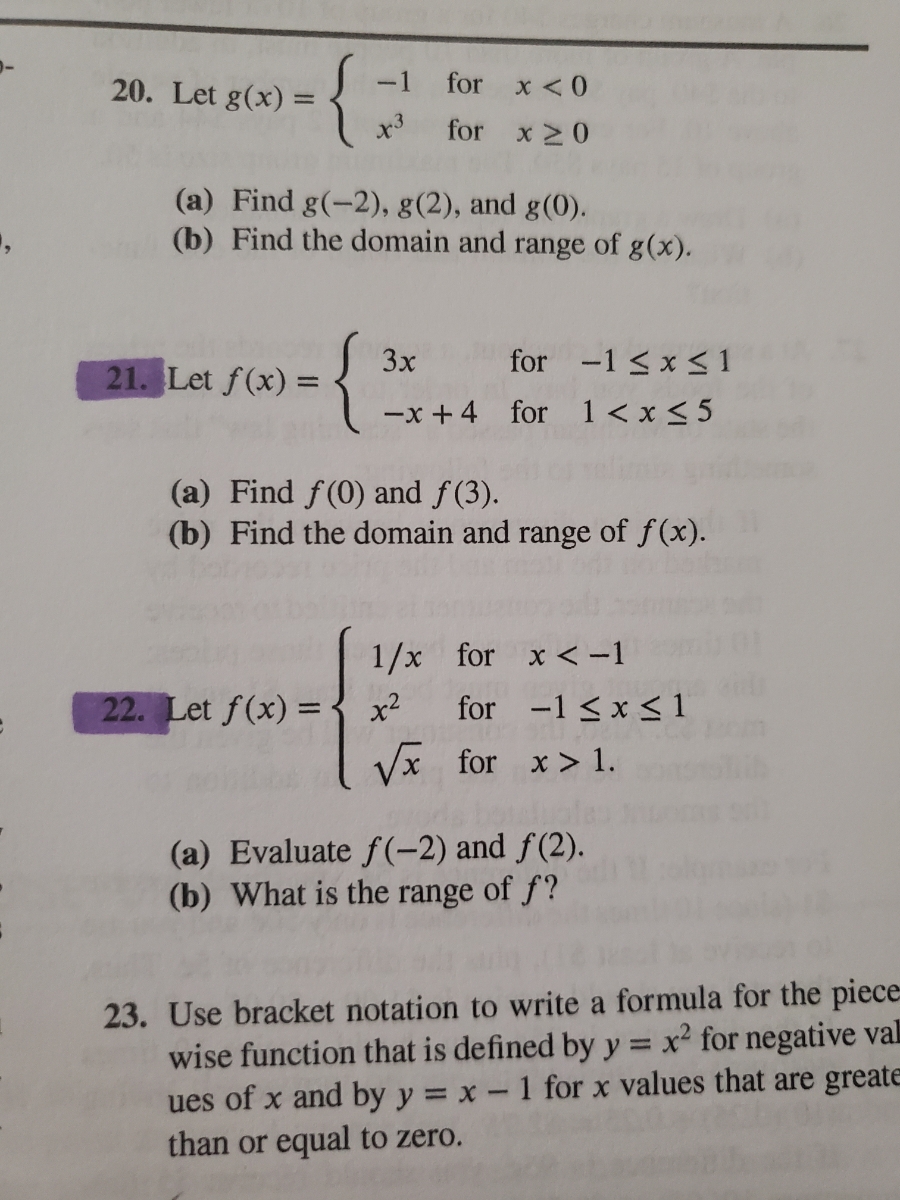



Answered 3x For 1 X 1 Let F X X 4 For Bartleby




How To Find Domain And Range From A Graph Video Khan Academy
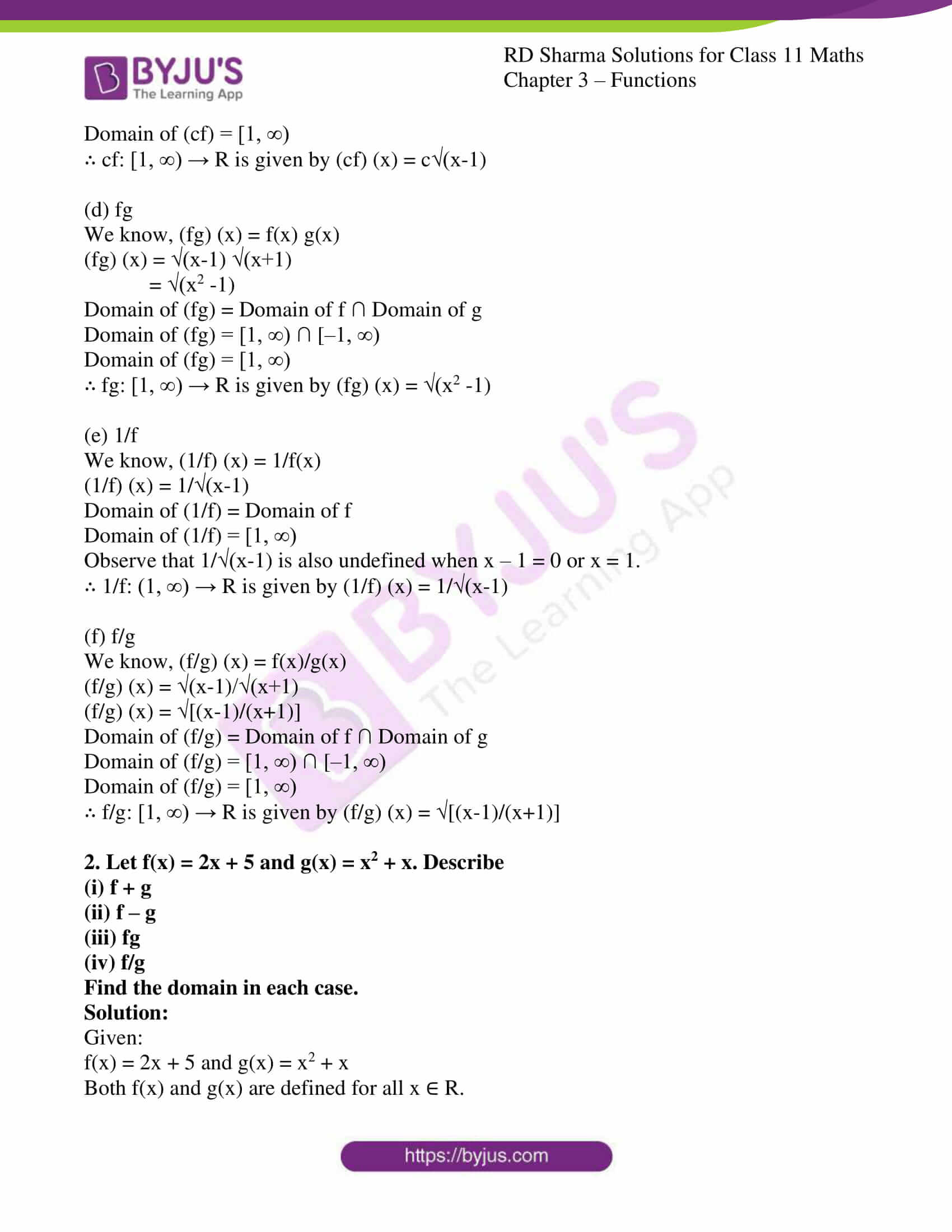



Rd Sharma Solutions For Class 11 Maths Updated For 21 22 Chapter 3 Functions
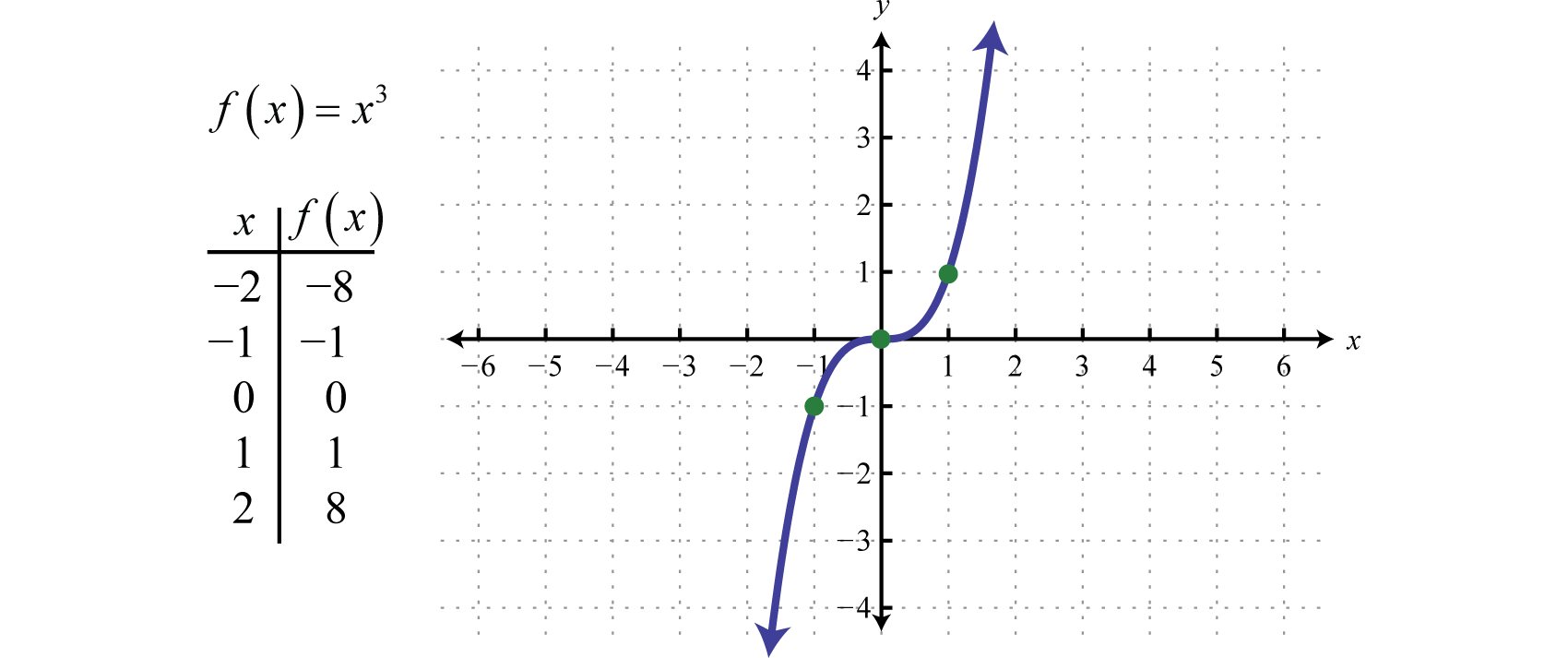



Graphing The Basic Functions



What Is The Range Of F X X 1 X 1 Quora




Sketch The Graph Of F X Y 1 X2 Ystate The Domain Chegg Com



1




What Are The Domain And Range For 1 Y X 3 And 2 Y 16 X 2 Quora




Find The Domain And Range Of The Function F X 1 2 Sin3x Youtube



Find Domain And Range Of 1 9 X 2 Dumians
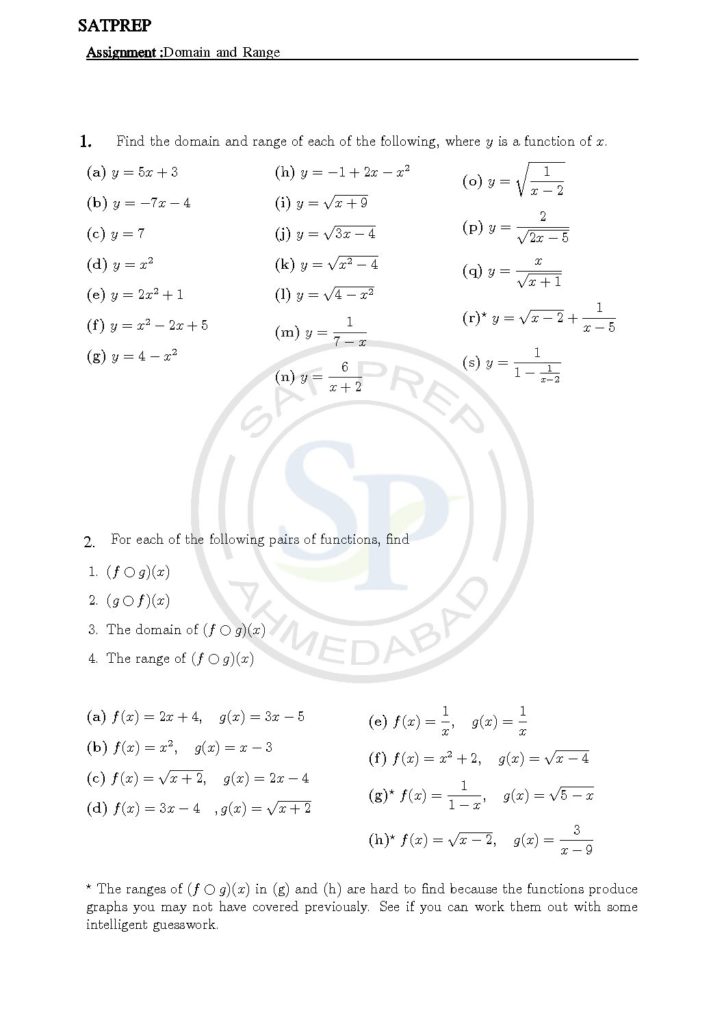



Domain And Range Function Are Identify By Graph Of Function
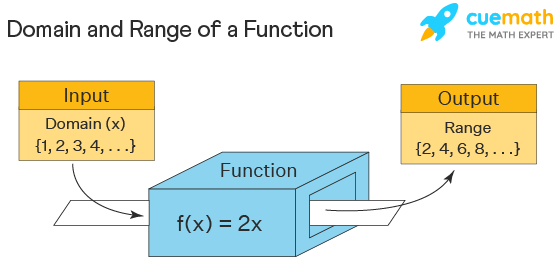



Domain And Range Examples Domain And Range Of Functions



What Is The Range Of Y X X 1 Quora
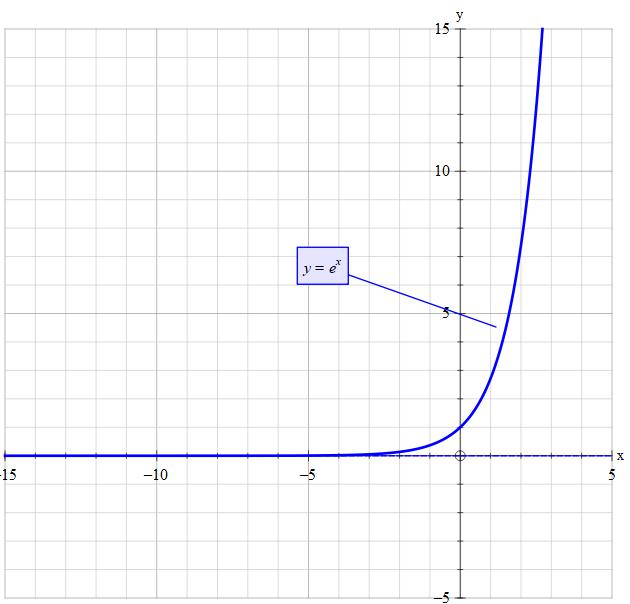



What Is The Domain And Range Of Y E X Socratic
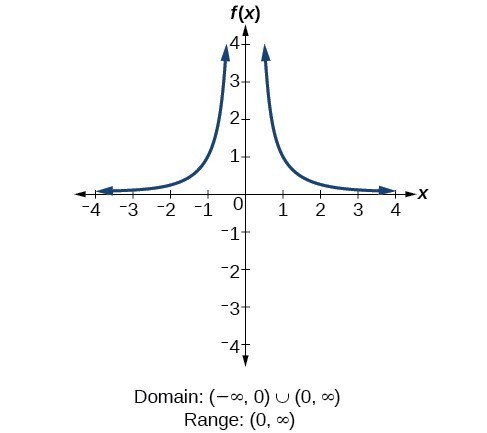



Determine Domain And Range From A Graph College Algebra



1
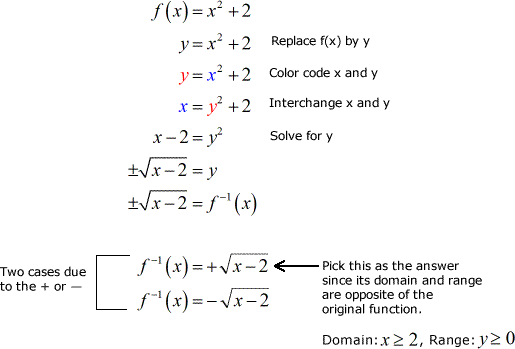



Inverse Of Quadratic Function Chilimath




6 Ways To Find The Domain Of A Function Wikihow




6 Ways To Find The Domain Of A Function Wikihow
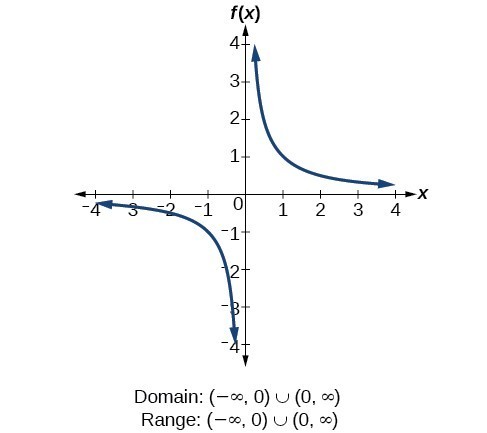



Determine Domain And Range From A Graph College Algebra




Graph The Following Functions Determine The Domain Chegg Com




6 Ways To Find The Domain Of A Function Wikihow




Find Domain And Range Of F X Square Root Of X 1 3 X Maths Relations And Functions Meritnation Com




Find Domain And Range F X X 1 X 1 Maths Relations And Functions Meritnation Com
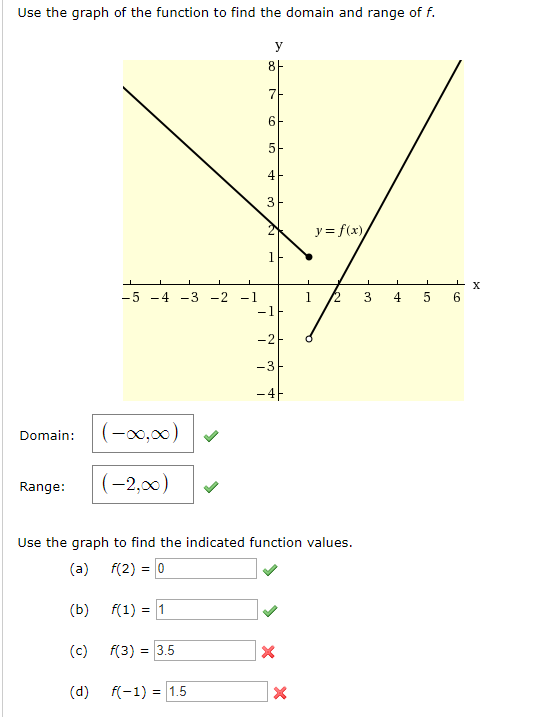



Use The Graph Of The Function To Find The Domain And Chegg Com
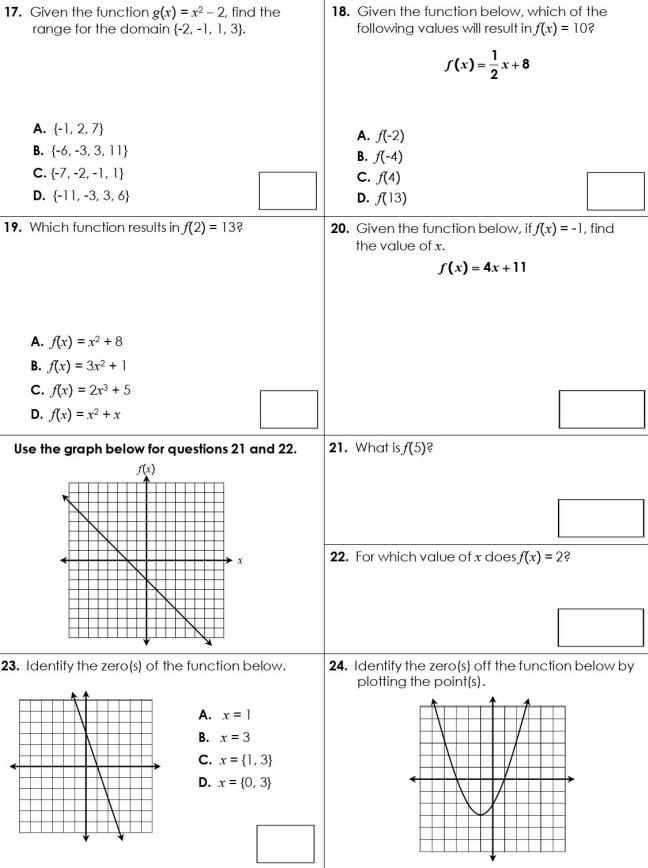



17 Given The Function G X X2 2 Find The Range Chegg Com



Q Tbn And9gcqj529kunx E23asbmwgf8sdjnucswezuevva8edino5czgfbjv Usqp Cau




Let F Rtor F X X 3 For All X Inr Find Its Domain And Range Also Draw Its Graph
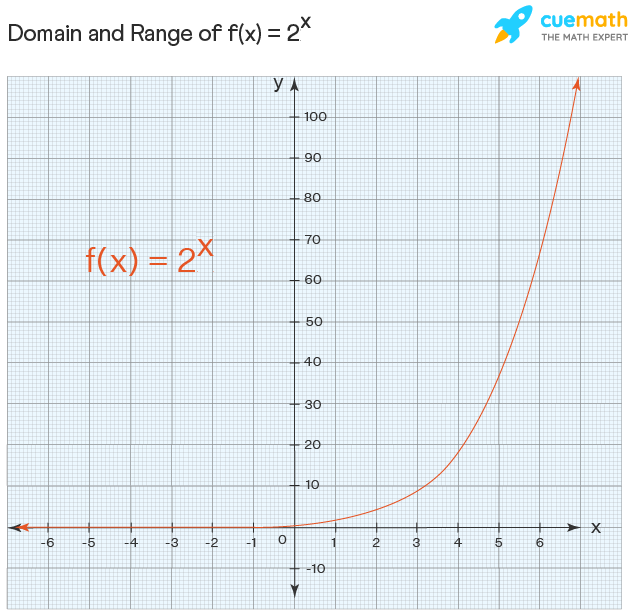



Domain And Range Examples Domain And Range Of Functions




Find The Domain Range Of F X 1 9 X 2 Brainly In




Misc 4 Find Domain And Range Of F X Root X 1 Chapter 2




Find The Domain And Range Of F X Sin 1 X X Where Represents The Greatest Integer Function



1




Domain And Range Of F X X 3 X 3 Are Respectively
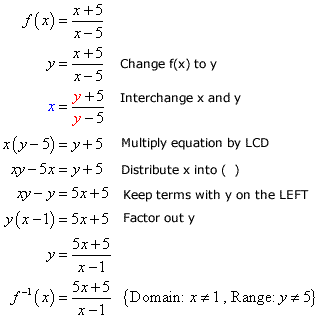



Inverse Of Rational Function Chilimath




Problems With Algebraically Finding The Range Of A Square Root Of A Quadratic Function Mathematics Stack Exchange




4 Ways To Find The Range Of A Function Wikihow



How Do You Find The Domain And Range Of Y Sqrt 3x 5 Socratic



2




Misc 6 Let F X X2 1 X2 X R Find Range Chapter 2




Find The Domain And Range Of The Real Function Fx 1 1 X 2 Brainly In
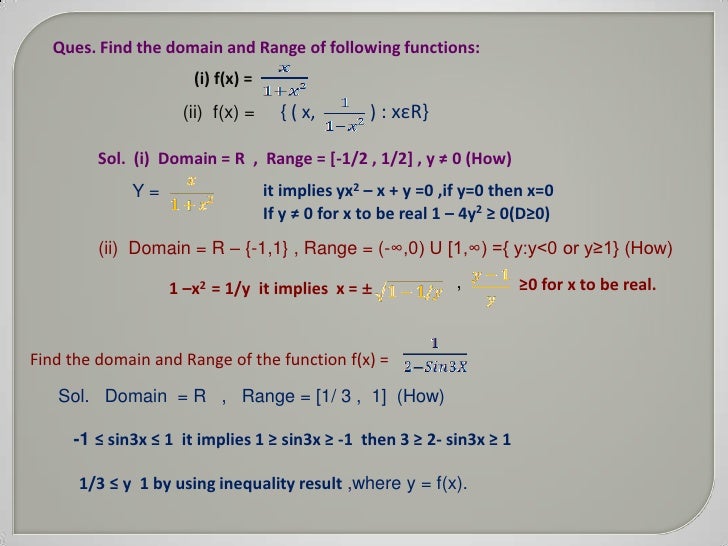



Relations Functions Pps
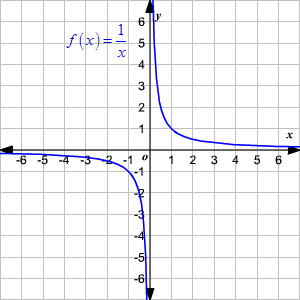



Domain And Range Of Rational Functions
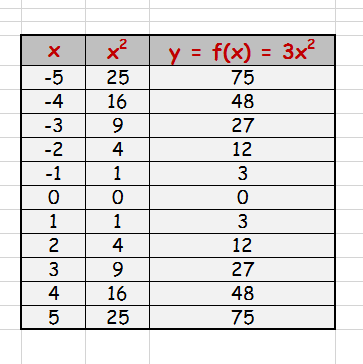



How Do You Find The Domain And Range Of Y 3x 2 Socratic




What Are The Domain And Range For 1 Y X 3 And 2 Y 16 X 2 Quora



Links Forward Inverse Trigonometric Functions




Find The Domain And Range Of The Function F X 1 1 X 2 X In R X 1 Dot Youtube




Question Video Finding The Domain And Range Of A Cubic Function Given Its Graph Nagwa
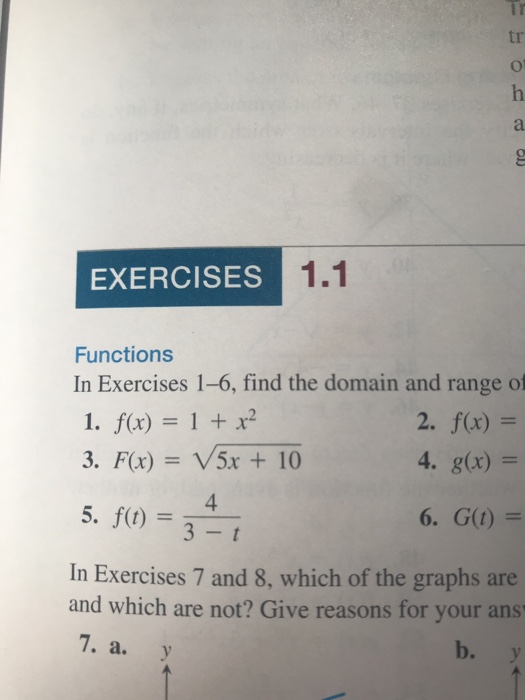



Tr Exercises 1 1 Functions In Exercises 1 6 Find The Chegg Com




Finding Domain And Range
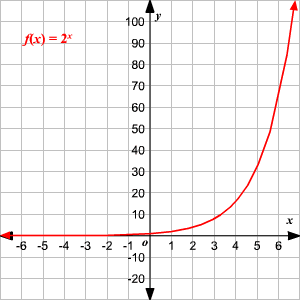



Domain And Range Of Exponential And Logarithmic Functions
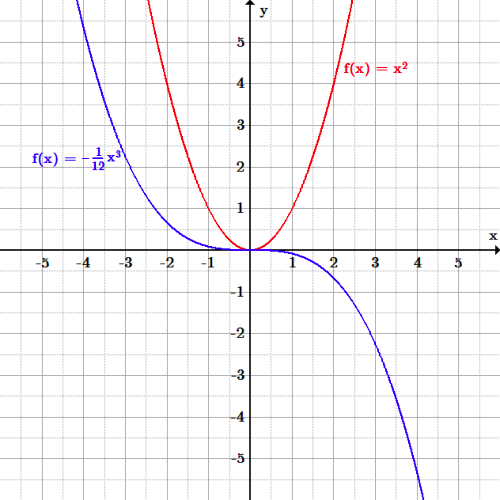



Domain And Range Boundless Algebra
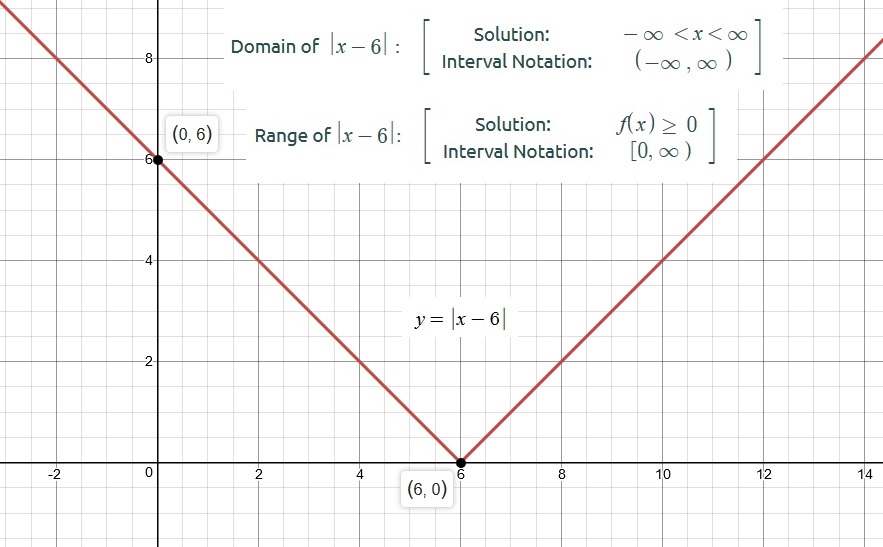



How Do You Find The Domain And Range Of Y X 6 Socratic




Example 15 F X 1 X What Is The Domain And Range Examples




Find The Domain And Range Of The Following Functions I F X X 2 Ii F X X 1 3 X




Ex 2 2 6 Determine Domain And Range Of R X X 5
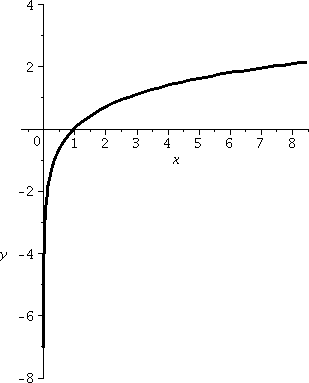



Domain And Range And Composition Of Functions




Misc 3 Find Domain Of F X X2 2x 1 X2 8x 12




Domain And Range Calculator Wolfram Alpha
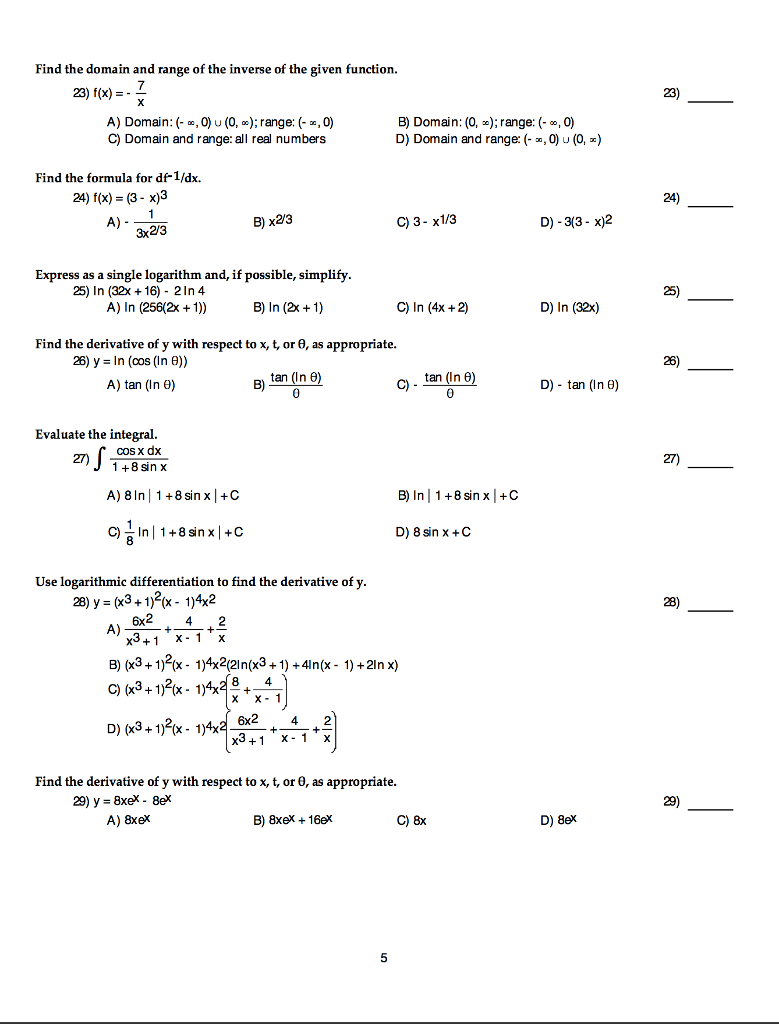



Find The Domain And Range Of The Inverse Of The Given Chegg Com
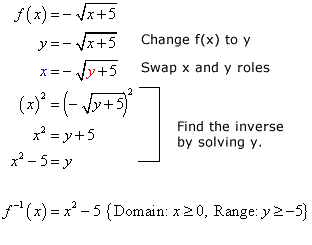



Inverse Of Square Root Function Chilimath
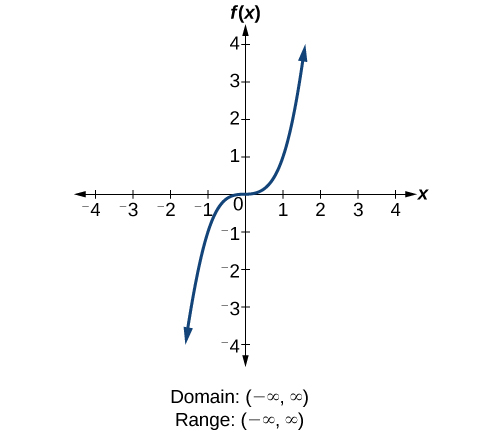



3 3 Domain And Range Mathematics Libretexts



What Is The Range Of The Function F X X 1 Quora




Find The Range Of Each Of The Following Functions F X X 3 F X 1 X 2 F X X 4 Youtube




Q 1 A Sm Find The Domain And Range Of Each Chegg Com




Find Domain And Range Of F X X 1 X 2
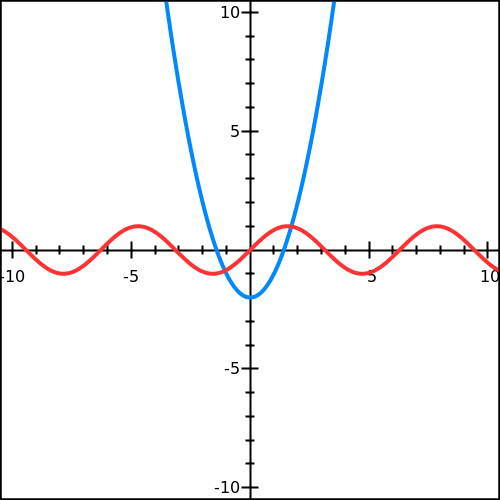



Domain And Range Free Math Help




Find The Domain And Range Of The Function F X 1 9 X2 Maths Relations And Functions Meritnation Com



No comments:
Post a Comment